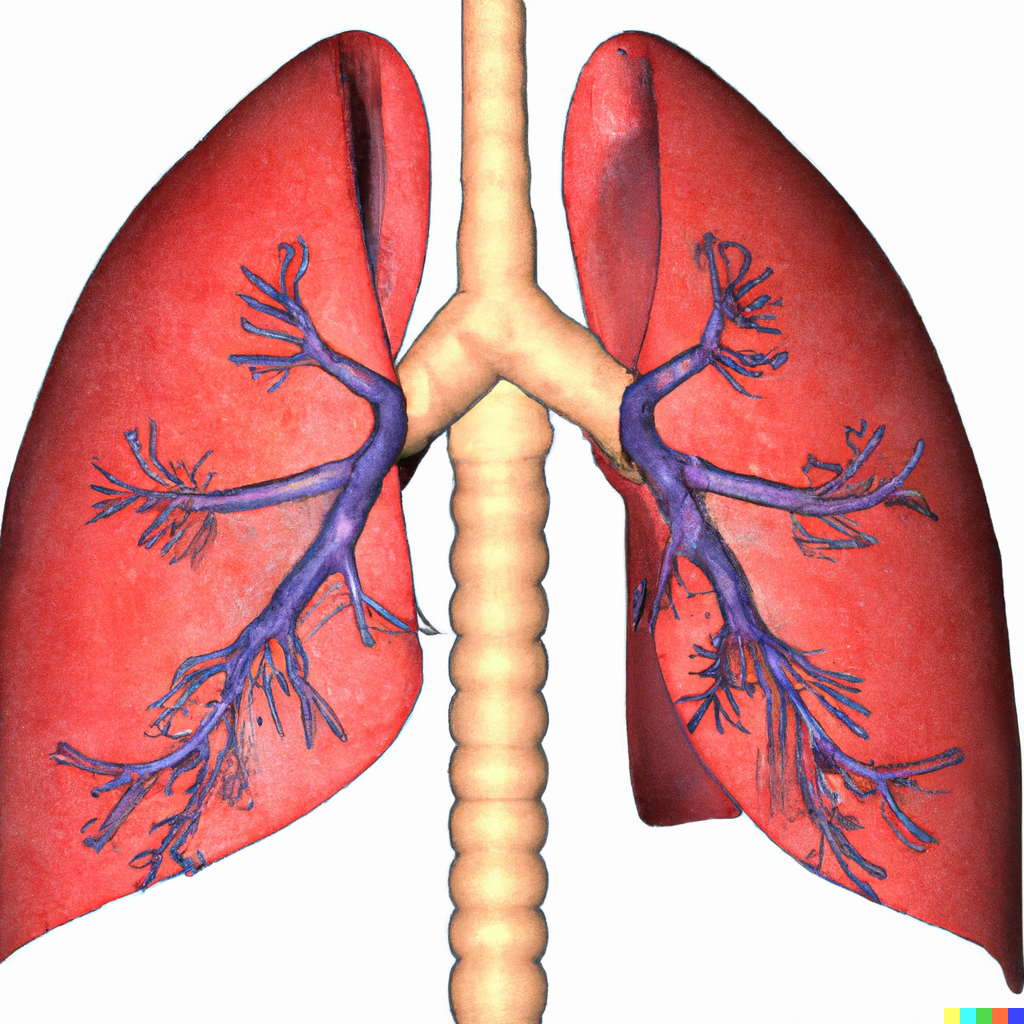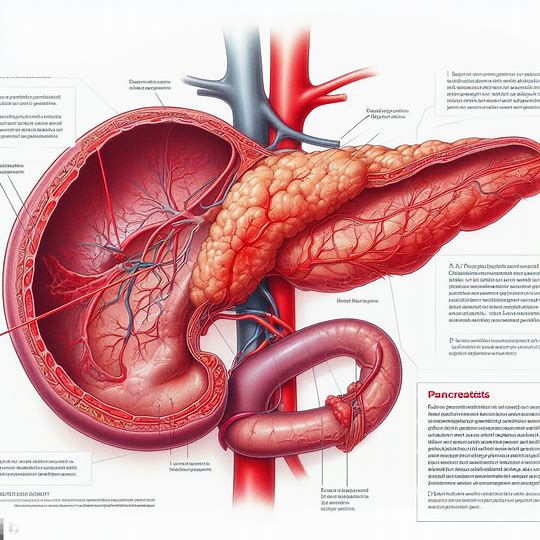【专家述评】| 胰腺神经内分泌瘤的精准诊疗进展
2024-01-07 中国癌症杂志 中国癌症杂志 发表于陕西省
本文针对精准医学在PanNET的诊断、预后预测和治疗中的最新进展予以述评。
[摘要] 自2011年肿瘤精准医疗的概念提出后,实体肿瘤的治疗逐渐迈入以基因检测和靶向治疗为主导的精准医学时代。作为少见肿瘤,胰腺神经内分泌瘤(pancreatic neuroendocrine tumor,PanNET)的发病率逐年升高,既往以分期、分级、分化为基础的临床病理学因素作为PanNET治疗选择和预后预测的指标,没有精准标志物用于判断PanNET预后及指导其治疗药物的选择。随着临床医师对PanNET的诊断、治疗和预后预测等方面的认识更新,以及基因组学和分子检测在PanNET中的深入研究,精准医疗能否给PanNET的诊治和预后预测带来新的变革?本文通过回顾最新文献阐述PanNET精准诊疗现状。
[关键词] 胰腺神经内分泌肿瘤;精准医疗;预后预测;靶向治疗
[Abstract] Since the concept of precision medicine proposed in 2011, the treatment of solid tumors has entered era of precision medicine led by gene testing. As a rare tumor, the incidence rate of pancreatic neuroendocrine tumor (PanNET) is increasing gradually. In the past, clinicopathological factors such as stage and grade system were used as criteria in the diagnosis and prognostic prediction of PanNET patients, and there were few biomarkers guiding the selection of PanNET diagnosis and treatment. As the diagnosis, treatment and prognosis of PanNET have been updated these years, and genomics and molecular testing are wildly used in PanNET research, can precision bring new changes to the diagnosis, treatment and prognostic prediction of PanNET? This article reviewed the current status of PanNET precision therapy through the latest literature.
[Key words] Pancreatic neuroendocrine neoplasm; Precision medicine; Prognostic prediction; Target therapy
自精准医学概念提出后,肿瘤的诊断和治疗已由原来的“一刀切治疗”模式,逐步进入以多维度分子谱特征与患者具体因素相结合的个体化治疗时代[1]。基因组测序和数据分析是精准医学的重要组成部分,通过识别疾病的驱动基因构成特异性靶点,从而影响肿瘤的治疗和预后。精准医学的发展主要依赖于技术的创新和进步,例如对肿瘤基因组学、转录组学和蛋白组学分析的丰富,配套药物的研发和相关临床研究的增多,如篮式试验和伞式试验[2],以及在分子层面致病和耐药机制的深入解析。目前精准医学已在多种癌症中成功实践,如非小细胞肺癌、乳腺癌和淋巴瘤等[3]。
胰腺神经内分泌肿瘤(pancreatic neuroendocrine neoplasm,PanNEN)属于少见肿瘤,既往针对其预后和预测分析主要根据临床病理学因素,包括TNM分期、分级程度、分化程度、功能性和遗传性改变等。2017年世界卫生组织(World Health Organization,WHO)将PanNEN分为分化好的胰腺神经内分泌瘤(pancreatic neuroendocrine tumor,PanNET)和分化差的胰腺神经内分泌癌(pancreatic neuroendocrine carcinoma,PanNEC),同时根据有丝分裂象和Ki-67增殖指数将PanNET进一步分为G1~G3级,并提出了PanNET G3的概念[4]。根据是否有激素分泌及相应的临床表现将PanNET分为功能性和无功能性,功能性PanNET常见的有胰岛素瘤、胃泌素瘤及胰高糖素瘤等。PanNET通常是散发的,但10%的PanNET与遗传性肿瘤综合征相关,常见的有多发性内分泌肿瘤1型、希佩尔-林道(von Hippel-Lindau,VHL)综合征和结节性硬化[5-6]。转移性PanNET的治疗药物包括生长抑素类似物(somatostatin analog,SSA)、多激酶抑制剂、哺乳动物雷帕霉素靶蛋白(mammalian target of rapamycin,mTOR)抑制剂和肽受体放射性核素治疗(peptide receptor radionuclide therapy,PRRT)等。目前PanNET患者的治疗选择和预后预测仍以病理学因素为主要指导依据,基因组学和分子病理学能否作为生物标志物协助PanNET的精准医疗尚存在争议,本文针对精准医学在PanNET的诊断、预后预测和治疗中的最新进展予以述评。
1 精准医学协助PanNET诊断
1.1 组织标志物
病理学检查是PanNET诊断的金标准,经典的PanNET免疫组织化学标志物包括嗜铬粒蛋白A(chromogranin A,CgA)、突触素(synaptophysin,Syn)、胰岛素相关蛋白1(insulinoma-associated protein 1,NSM1)、核分裂象和Ki-67增殖指数等,随着精准分子在诊断和鉴别诊断方面趋于成熟,分子标志物加入常规病理学检查以指导临床诊断,包括O6-甲基鸟嘌呤DNA甲基转移酶(O6-methylguanine DNA methyltranferase,MGMT)、生长抑素受体2/5(somatostatin receptor 2/5,SSTR2/5)、死亡结构域相关蛋白/ATP依赖的解旋酶(death-domain associated protein/alpha thalassemia/mental retardation syndrome X-linked,DAXX/ATRX)、Rb1、P53等标志物。分子标志物还可以协助鉴别诊断PanNET G3和PanNEC。ATRX/DAXX、MEN1和(或)p27的表达缺失,SSTR2/5表达阳性支持PanNET G3的诊断;相反,ATRX/DAXX表达缺失在NEC中极少见,Rb完全缺失、p53弥漫阳性或完全缺失,SSTR2/5表达阴性指向PanNEC的诊断[7]。
1.2 循环生物标志物
虽然组织病理学检查结果对PanNET诊断至关重要,但不是所有的PanNET都能取到足够多的组织进行病理学检查。另外,由于PanNET异质性强,穿刺组织的病理学检查结果不一定能反映整体的病理学类型和分级。因此,借助其他手段辅助病理学诊断也是精准医学的重点。对于功能性PanNET,外周血激素水平可以作为协助诊断功能性PanNET的特异性生物标志物,如血清胃泌素、血清胰岛素、血清胰高血糖素、血清生长抑素和血清血管活性肠肽。对于非功能性PanNET,血清CgA、神经元特异性烯醇化酶(neuron specific enolase,NSE)、糖类抗原19-9(carbohydrate antigen 19-9,CA19-9)和甲胎蛋白都可以作为疗效预测的非特异性生物标志物。其中血清CgA是欧洲神经内分泌肿瘤学会(European Neuroendocrine Tumor Society,ENETS)推荐的唯一循环生物标志物,其灵敏度和特异度分别为62%~75%和60%~100%。血清CgA与肿瘤负荷、进展和转移密切相关,并且其水平下降是治疗有效的标志物[8]。其他非特异性生物标志物的灵敏度或特异度较低,因此临床应用建议成套相互验证,也就是循环分子多重分析策略,其中代表性的是NETest。NETest是目前NET液体活检中最为成熟的血液多基因生物标志物,它是一种包含51个NET特异性循环转录产物的多基因检测方法,可用于NET的诊断和实时监测。NETest在PanNET诊断方面的准确率为95%~96%,在区分疾病稳定期和进展期的准确率为84.5%~85.5%,优于血清CgA和尿5-羟基吲哚乙酸检测[9]。
1.3 影像学指标
影像与分子相结合,特别是核医学核素的更新,使PanNET的诊断、分化分级和肿瘤负荷的评估更加精准。生长抑素受体密度(somatostatin receptor density,SRD)是68Ga-DOTANOC-正电子发射体层成像(positron emission tomography,PET)的参数之一,SRD对PanNET组织中DAXX表达缺失具有预测作用,随着SRD的增加,DAXX表达缺失的发生率升高[10]。SRD可以为活检组织的分级评估提供补充信息,识别更具侵袭性的术前疾病。18F-FDG PET也能作为组织学分级的补充,反映PanNET的分级和风险分层,特别是在Ki-67增殖指数>10%的PanNET G2和PanNET G3中[11]。18F-FDG阳性的PanNET患者的中位总生存期(median overall survival,mOS)比18F-FDG阴性患者更短,18F-FDG阳性是PanNET G1/G2患者高危死亡风险的唯一预测因素[12]。
2 精准预测预后和分子分型
2.1 PanNET分子谱和分子分型
全基因组或外显子测序可以识别有意义的基因改变,是精准医疗的前提。但PanNET的基因突变量和可操作的基因比例都非常低[13]。全外显子测序显示,散发性PanNET基因突变谱较常见的是MEN1(37%~44%)、DAXX/ATRX(43%)及mTOR通路相关基因(14%,如PTEN、DEPDC5和TSC1/2)[14-16]。早在2017年Scarpa等[15]将PanNET的基因改变归纳成4种功能通路:DNA损伤修复(MUTYH、BRCA、CHEK2等)、染色质重塑(ARID1A、SMARCA4)、端粒改变(ATRX、DAXX)及mTOR通路(EWSR融合、PTEN、HIF-1/2)。PanNET患者的胚系突变比例为17%,包括MEN1、CDKN1B和VHL突变等[15]。此外,在少数PanNET组织中也检测到胰腺导管腺癌相关的基因改变,如TP53或SMAD4。胰腺特异性操纵Rb和p53基因可以诱导胰岛细胞的恶性转化[17]。2022年新版WHO神经内分泌肿瘤病理学分类基于表观遗传学特征对PanNET重新分型[18],将无功能性PanNET根据转录因子和表观遗传学相似性分为3型,具有不同的分化分级、预后和突变谱。其中Ⅰ型为PDX1-/ARX+,类似α细胞,表现为高分化、多为G1、平均肿瘤大小3 cm、预后良好,分子谱多表现为MEN1++、ATRX/DAXX+、YY1-、mTOR+。Ⅱ型为PDX1+/-/ARX+,表现为G2多见、预后差,分子表达有MEN1+++、ATRX/DAXX+++、YY1-、mTOR+++。这些分子分型可以指导PanNET的预后判断。同样,胰岛素瘤也可以分成3种亚型,以区别典型的惰性胰岛素瘤和侵袭性胰岛素瘤。典型的胰岛素瘤类似β细胞的表观遗传表现,PDX1+/ARX-,分化好、G1多见、小于2 cm、预后好,分子谱为MEN1-、ATRX/DAXX-、YY1+++、mTOR-。而侵袭性胰岛素瘤则更多表现为PDX1+/-/ARX+,具有更多不良预后因素。
2.2 预后预测的组织标志物
辅助治疗在PanNET中没有定论,但高危复发风险人群是临床实践中需要重点关注的PanNET术后类型。除了以临床病理学因素为主的复发风险模型构建外,如肿瘤大小、分级、神经侵犯及功能性改变等[19-21],分子标志物也更多地用于预后预测。DAXX/ATRX参与端粒重塑,其基因突变或蛋白丢失会出现异常端粒延长,是PanNET预后预测的热点分子。荷兰乌特勒支大学的Hackeng等[22]研究显示,ATRX/DAXX缺失或端粒延长替代通路(alternative lengthening of telomeres,ALT)激活是PanNET的独立不良预后因素,并与PanNET患者的高危病理学因素相关,如肿瘤体积大、分级高及淋巴结转移等。DAXX/ATRX缺失或ALT阳性表达的小于2 cm的PanNET患者5年无复发生存率明显低于DAXX/ATRX阳性表达者,存在DAXX/ATRX缺失或ALT阳性的小于2 cm的PanNET也建议手术[23]。mTOR信号负调节因子(如PTEN、TSC2、TSC1和DEPDC5)的失活突变与PanNET G2患者的不良预后相关。ARX对ALT激活的易感性,ARX高表达可预示无功能PanNET更高的转移潜力[24-25]。ARX阳性的胰岛素瘤表现出类似无功能性PanNET的基因改变,如DAXX/ATRX和CDKN2A缺失,同时侵袭性更强,比惰性胰岛素瘤更易转移[25]。此外,DNA损伤修复通路的相关分子,低CHK2表达和ATM丢失也是PanNET术后复发的独立标志物[26]。
2.3 循环肿瘤细胞(circulating tumor cell,CTC)和循环肿瘤DNA(circulating tumor DNA,ctDNA)/RNA
液体活检可为PanNET患者的预后提供分子线索。英国伦敦大学的Rizzo等[27]通过回顾性研究发现,CTC、ctDNA和循环肿瘤RNA可为NET患者提供预后预测信息。CTC在NET中的阳性率较低(21%~33%),CTC阳性与骨转移及肝转移负荷存在高度相关性,而CTC数量与Ki-67增殖指数及血清CgA水平之间的相关性不强[28]。Mandair等[29]在90例PanNEN患者的队列中报告CTC阳性与不良预后具有相关性,基线CTC阴性与疾病稳定状态密切相关,与CTC阳性患者相比,CTC阴性的PanNET患者的OS和无进展生存期(progression-free survival,PFS)明显更长,且与组织学分级的预测值相似。ctDNA在PanNET患者中的检测阳性率为87.5%,包括TP53、KRAS、EGFR、PIK3CA、BRAF、MYC和CCNE1基因的基因组改变[30]。尽管这包含了可能对预后有影响的肿瘤特异性基因改变,但ctDNA在PanNET临床实践中的意义尚未达成共识。miRNA在PanNET中的研究更多。miR-21与PanNET患者的不良预后有关[31]。miR-375在PanNET和回肠NET中表达最高,且miR-328表达可以区分PanNET G1和G2[32]。miR-196a表达水平与PanNET分期和有丝分裂数相关。miR-196a高表达的PanNET患者分期晚、有较高的有丝分裂数和Ki-67增殖指数。此外,miR-196a高表达与PanNET患者的mOS和无病生存期缩短显著相关[33]。血液NETest检测也是识别和监测肿瘤状态的可行手段[34]。瑞典乌普萨拉大学的Öberg等[9]对7 000多例NET患者进行回顾性分析,发现NETest检测优于血清CgA,可以监测转移性PanNET的疾病状态及是否进展,也可用于评估PanNET手术是否根治性切除。Chirinde[35]在2023年欧洲神经内分泌肿瘤学会年会上公布了临床应用NETest的多中心前瞻性研究数据,纳入的139例NET患者中位NETest评分为33,NETest评分可作为NET患者病程中监测复发的参考指标。NETest也可用于评估SSA或PRRT的治疗是否有效,NETest下降能准确预测PRRT疗效,是PRRT疗效的预测标志物[36]。而且在PRRT治疗过程中,NETest对PRRT疗效的评估更灵敏,与影像学相比平均提前1年检测到NETest变化,从而能更早判断疗效[37]。
3 精准治疗
可操作的基因改变和能匹配的靶向治疗是精准医学的目标之一,PanNET治疗最关心的问题即根据基因或分子标志物实行精准治疗,以及如何精准预测药物疗效。
目前没有证据支持在标准治疗前通过分子谱改变为PanNET患者提供治疗指导。法国的Le Tourneau等[38]开展了二代测序指导晚期实体瘤治疗用药的前瞻性研究,结果显示,只有10%~25%的患者接受了基因相匹配的治疗,与医师选择的治疗方案相比,根据分子检测结果使用超适应证靶向药物并不能提高癌症患者的PFS。在罕见肿瘤精准医学MASTER试验[39]中的NET队列,31%的NEN患者根据分子肿瘤委员会的建议得到靶向治疗,客观缓解率(objective response rate,ORR)为32%,疾病控制率(disease control rate,DCR)为71%,与该研究中其他晚期罕见癌症队列的疗效一致。法国巴黎萨克莱大学的Boilève等[40]回顾性分析了NEN患者精准治疗的真实世界数据,这项单中心研究结果显示,mTOR通路是最常改变的通路(24%),其次是MEN1通路(18%)、细胞周期通路(6%)、Rb通路(9%)、DAXX/ATRX通路(5%)、RAS通路(6%)和染色质重塑通路(7%)。48%的NEN患者有可操作的基因改变,只有14%的患者接受了匹配的分子靶向治疗,临床获益率为67%,mOS高于未接受分子匹配治疗的患者。然而有mTOR通路改变的NEN患者应用依维莫司的预后并没有优于无mTOR通路改变者。当NEN患者携带MEN1、磷脂酰肌醇3-激酶(phosphoinositide3-kinase,PI3K)/蛋白激酶B(protein kinase,AKT)/哺乳动物雷帕霉素靶蛋白(mammalian target of rapamycin,mTOR)和DAXX/ATRX通路基因改变时,接受SSA、依维莫司、舒尼替尼和烷基化化疗的中位PFS(median PFS,mPFS)无显著差异。
在标准治疗中,SSTR的表达可能是第一批成功用于PanNET治疗的标志物之一。SSTR状态可以通过免疫组织化学或核素体内成像评估。虽然只有少数回顾性研究[41]表明,SSTR状态可以预测NEN对SSA治疗的反应,但由于CLARINET和PROMID试验纳入的患者中SSTR阳性率分别为100%和86%[42-43],所以目前临床使用SSA时仍会参考SSTR状态。结合68Ga-DOTANOC-PET的SSTR表达程度可以进一步定量PanNET患者的肿瘤负荷,协助预测对SSA治疗的反应[44]。 MGMT启动子甲基化状态或蛋白质表达作为烷化剂化疗效果预测的标志物仍存在争议。有研究[45-46]表明,MGMT缺失与卡培他滨联合替莫唑胺化疗(capecitabine/temozolomide,CapTem)方案更高的缓解率有关,但也有研究[47]显示,MGMT状态与CapTem方案的疗效无关。在选择CapTem治疗时也可以参考Ki-67增殖指数,Ki-67增殖指数高的NET患者更加推荐化疗,但其阈值尚未确认[48]。中山大学附属第一医院的Wang等[47]研究显示,Ki-67增殖指数10%~40%的PanNET患者应用CapTem有更高的ORR和mPFS。
抗血管生成的靶向药仍是PanNET的主流药物,靶点涉及血管内皮生长因子受体(vascular endothelial growth factor receptor,VEGFR)、血小板衍生生长因子受体(platelet-derived growth factor receptor,PDGFR)、成纤维细胞生长因子受体(fibroblast growth factor receptor,FGFR)等,如舒尼替尼、索凡替尼、仑伐替尼。Ki-67增殖指数和pAKT低表达与NEN G3对舒尼替尼的疗效呈正相关[49]。PanNEN患者的血清VEGFR2升高与应用舒尼替尼的OS更长呈正相关, sVEGFR-3和SDF-1α的基线低水平与患者较长的mPFS和mOS相关[50]。在仑伐替尼的治疗中,HRAS过表达可能用于预测PanNET患者对仑伐替尼治疗的有效性[51]。此外,影像学检查的指数亦可用于预测抗血管生成药物的疗效。如动脉期计算机体层成像(computed tomography,CT)值、CT灌注比值(肿瘤CT值/腹主动脉CT值)及基于CT的影像组学模型可以预测PanNET患者应用舒尼替尼治疗的效果[52-53]。CT灌注也可用于预测贝伐单抗的疗效[54]。到目前为止还没有发现有效的生物标志物来预测PanNET对mTOR抑制剂(如依维莫司)的反应,在RADIANT-3临床研究[55]中,只有1例PI3K/AKT/mTOR信号通路突变的患者,其接受依维莫司治疗的mPFS为8.1个月,并不优于整体人群(11.0个月)。在探索mTOR抑制剂耐药标志物的临床前研究[56]中,KRAS和PIK3CA突变与PanNET对依维莫司治疗耐药有关。此外,PTEN和LKB1缺失、c-Myc激活、FGFR4-G388R单核苷酸多态性也是PanNEN细胞系对mTOR抑制剂产生耐药的预测标志物[57-58]。PAK4-NAMPT高表达的PanNET中有更高的PTEN突变率,mTOR通路抑制因子高表达,PAK4和NAMPT双重阻断可增强依维莫司在PanNET中的疗效[59]。
PRRT核素治疗需要SSTR高表达,可通过核医学成像如111I/99mTc奥曲肽显像或68Ga-DOTANOC-PET[60]进行检测。基于组织的分子遗传信息在PRRT预测中几乎没有价值。双标PET对于接受PRRT治疗的患者有更多的预测价值,SSTR高摄取且FDG低摄取的PanNET患者对PRRT疗效好,相反FDG/SSTR高比值的患者应用PRRT的治疗效果差。18F-FDG阴性病例的mOS明显长于18F-FDG阳性病例[12]。近期美国纪念斯隆-凯特琳癌症中心的Bodei等[61]评估了两种循环生物标志物[PRRT预测商数(PRRT predict quotient,PPQ)和NETest]在177Lu-DOTATE治疗中的疗效预测作用,结果显示,PPQ是177Lu-DOTATE放射敏感性的准确预测因子,其预测准确率为96%,PPQ阳性患者的12个月疾病控制率为97%,而PPQ阴性患者为26%,治疗有效患者的NETest在随访过程中显著降低,无反应者的NETest在监测过程中显著增加,基于血液标志物可以监测和个体化管理177Lu-DOTATE患者的治疗。
经动脉的局部介入治疗对于PanNET肝转移也是常用的治疗手段,如经动脉化疗栓塞(transarterial chemoembolization,TACE)、经动脉栓塞(transarterial embolization,TAE)。目前研究多聚焦于影像组学在TACE/TAE治疗PanNET肝转移疗效中的预测作用。基线磁共振成像(magnetic resonance imaging,MRI)的动脉容积增强(volumetric arterial enhancement,VAE)是TACE治疗有效的独立预测因子[62]。此外通过MRI的最大强化体积(largest enhancing volume,ETB)可测量肝转移灶信号强度的改变,是接受TACE治疗的PanNET患者的独立预测因素[63]。基于CT影像的动脉强化指数(arterial enhancement index,AEI)和门静脉强化指数(portal-venous enhancement index,PEI)也可用于PanNET患者接受TAE治疗的效果预测 [64]。
在PanNET的少见基因突变中,有病例报道[65]伴NTRK融合的转移性NET应用恩曲替尼治疗的效果。9%~17%的VHL综合征患者合并PanNET,美国MD Anderson癌症中心的Jonasch等[66]开展了HIF-2α抑制剂belzutifan治疗VHL综合征的Ⅱ期临床研究,结果显示,22例VHL相关的PanNET患者,应用belzutifan治疗的ORR为83%,包括3例完全缓解,中位缓解持续时间为5.5个月。今年正在进行的Ⅱ期PRECISION1篮子试验拟研究白蛋白结合型西罗莫司在具有TSC1/2致病性失活改变的实体瘤患者中的疗效[67]。动物模型显示,白蛋白结合型西罗莫司抑制肿瘤效果是口服依维莫司的12倍。在0.57%的胰腺肿瘤存在TSC1/2突变,同时TSC1/2突变是遗传性PanNET较常见的突变类型,williamhill asia 也很期待这一结果。
除了少数明确靶点外,PanNET的精准医学还面临诸多挑战,主要障碍包括对驱动基因缺乏可操作的靶向药、泛靶点药物的靶向基因机制不明确,对临床和分子高质量结果数据的解读有限,以及在临床实践中的伦理学问题。就目前阶段而言,williamhill asia 希望能够做到开发整合算法,将PanNET诊治相关的标志物和检查技术有机结合相互补充,通过多维度的数据充分了解PanNEN发展和演变背后的机制,并以更方便和非侵入性的方式应用于PanNEN临床实践,以实现PanNEN患者的精准治疗和预后预测的目标。
利益冲突声明:所有作者均声明不存在利益冲突。
[参考文献]
[1] BECKMANN J S, LEW D. Reconciling evidence-based medicine and precision medicine in the era of big data: challenges and opportunities[J]. Genome Med, 2016, 8(1): 134.
[2] PARK J J H, HSU G, SIDEN E G, et al. An overview of precision oncology basket and umbrella trials for clinicians[J]. CA A Cancer J Clin, 2020, 70(2): 125-137.
[3] SATPATHY S, JAEHNIG E J, KRUG K, et al. Microscaled proteogenomic methods for precision oncology[J]. Nat Commun, 2020, 11(1): 532.
[4] LLOYD R V, OSAMURA R Y, KLOPPEL G, et al.WHOclassification of tumours of endocrine organs[M]. 4th ed, Lyon: International Agency for Research on Cancer (IARC) Press, 2017: 11-64.
[5] SZYBOWSKA M, METE O, WEBER E, et al. Neuroendocrine neoplasms associated with germline pathogenic variants in the homologous recombination pathway[J]. Endocr Pathol, 2019, 30(3): 237-245.
[6] ALREZK R, HANNAH-SHMOUNI F, STRATAKIS C A. MEN4 and CDKN1B mutations: the latest of the MEN syndromes[J]. Endocr Relat Cancer, 2017, 24(10): T195-T208.
[7] UCCELLA S, LA ROSA S, METOVIC J, et al. Genomics of high-grade neuroendocrine neoplasms: well-differentiated neuroendocrine tumor with high-grade features (G3 NET) and neuroendocrine carcinomas (NEC) of various anatomic sites[J]. Endocr Pathol, 2021, 32(1): 192-210.
[8] BOCCHINI M, NICOLINI F, SEVERI S, et al. Biomarkers for pancreatic neuroendocrine neoplasms (PanNENs) managementan updated review[J]. Front Oncol, 2020, 10: 831.
[9] ÖBERG K, CALIFANO A, STROSBERG J R, et al. A metaanalysis of the accuracy of a neuroendocrine tumor mRNA genomic biomarker (NETest) in blood[J]. Ann Oncol, 2020, 31(2): 202-212.
[10] MAPELLI P, BEZZI C, MUFFATTI F, et al. Somatostatin receptor activity assessed by 68Ga-DOTATOC PET can
preoperatively predict DAXX/ATRX loss of expression in welldifferentiated pancreatic neuroendocrine tumors[J]. Eur J Nucl Med Mol Imaging, 2023, 50(9): 2818-2829.
[11] ROZENBLUM L, MOKRANE F Z, YEH R, et al. Imagingguided precision medicine in non-resectable gastro-enteropancreatic neuroendocrine tumors: a step-by-step approach[J]. Eur J Radiol, 2020, 122: 108743.
[12] BINDERUP T, KNIGGE U, JOHNBECK C B, et al. 18F-FDG PET is superior to WHO grading as a prognostic tool in neuroendocrine neoplasms and useful in guiding PRRT: a prospective 10-year follow-up study[J]. J Nucl Med, 2021, 62(6): 808-815.
[13] PRIESTLEY P, BABER J, LOLKEMA M P, et al. Pan-cancer whole-genome analyses of metastatic solid tumours[J]. Nature, 2019, 575(7781): 210-216.
[14] CAO Y N, ZHOU W W, LI L, et al. Pan-cancer analysis of somatic mutations across 21 neuroendocrine tumor types[J]. Cell Res, 2018, 28(5): 601-604.
[15] SCARPA A, CHANG D K, NONES K, et al. Whole-genome landscape of pancreatic neuroendocrine tumours[J]. Nature, 2017, 543(7643): 65-71.
[16] JIAO Y C, SHI C J, EDIL B H, et al. DAXX/ATRX, MEN1, and mTOR pathway genes are frequently altered in pancreaticneuroendocrine tumors[J]. Science, 2011, 331(6021): 1199-
1203.
[17] YAMAUCHI Y, KODAMA Y, SHIOKAWA M, et al. Rb and p53 execute distinct roles in the development of pancreatic neuroendocrine tumors[J]. Cancer Res, 2020, 80(17): 3620-3630.
[18] WHO Classification of Tumours Editorial Board. Endocrine and Neuroendocrine tumours[S/OL]. 5th ed. Lyon (France): International Agency for Research on Cancer, 2022[2023-08-11]. https://tumourclassification.larc.who.int/charpters/53.
[19] GAO H L, LIU L, WANG W Q, et al. Novel recurrence risk stratification of resected pancreatic neuroendocrine tumor[J]. Cancer Lett, 2018, 412: 188-193.
[20] WANG W Q, ZHANG W H, GAO H L, et al. A novel risk factor panel predicts early recurrence in resected pancreatic neuroendocrine tumors[J]. J Gastroenterol, 2021, 56(4): 395-405.
[21] TITAN A L, NORTON J A, FISHER A T, et al. Evaluation of outcomes following surgery for locally advanced pancreatic neuroendocrine tumors[J]. JAMA Netw Open, 2020, 3(11): e2024318.
[22] HACKENG W M, BROSENS L A A, KIM J Y, et al. Nonfunctional pancreatic neuroendocrine tumours: ATRX/DAXX and alternative lengthening of telomeres (ALT) are prognostically independent from ARX/PDX1 expression and tumour size[J]. Gut, 2022, 71(5): 961-973.
[23]ALTIMARI M, ABAD J, CHAWLA A. The role of oncologic rep and enucleation for small pancreatic neuroendocrine tumors[J]. HPB, 2021, 23(10): 1533-1540.
[24]CEJAS P, DRIER Y, DREIJERINK K M A, et al. Enhancer signatures stratify and predict outcomes of non-functional pancreatic neuroendocrine tumors[J]. Nat Med, 2019, 25(8): 1260-1265.
[25]HACKENG W M, SCHELHAAS W, MORSINK F H M, et al. Alternative lengthening of telomeres and differential expression of endocrine transcription factors distinguish metastatic and non-metastatic insulinomas[J]. Endocr Pathol, 2020, 31(2): 108-118.
[26]HUA J, SHI S, XU J, et al. Expression patterns and prognostic value of DNA damage repair proteins in resected pancreatic neuroendocrine neoplasms[J]. Ann Surg, 2022, 275(2): e443-e452.
[27]RIZZO F M, MEYER T. Liquid biopsies for neuroendocrine tumors: circulating tumor cells, DNA, and microRNAs[J]. Endocrinol Metab Clin N Am, 2018, 47(3): 471-483.
[28]KHAN M S, KIRKWOOD A A, TSIGANI T, et al. Early changes in circulating tumor cells are associated with response and survival following treatment of metastatic neuroendocrine neoplasms[J]. Clin Cancer Res, 2016, 22(1): 79-85.
[29]MANDAIR D, KHAN M S, LOPES A, et al. Prognostic threshold for circulating tumor cells in patients with pancreatic and midgut neuroendocrine tumors[J]. J Clin Endocrinol Metab, 2021, 106(3): 872-882.
[30]ZAKKA K, NAGY R, DRUSBOSKY L, et al. Blood-based next-generation sequencing analysis of neuroendocrine neoplasms[J]. Oncotarget, 2020, 11(19): 1749-1757.
[31]FINNERTY B M, GRAY K D, MOORE M D, et al. Epigenetics of gastroenteropancreatic neuroendocrine tumors: a clinicopathologic perspective[J]. World J Gastrointest Oncol, 2017, 9(9): 341-353.
[32]PANARELLI N, TYRYSHKIN K, WONG J J M, et al. Evaluating gastroenteropancreatic neuroendocrine tumors through microRNA sequencing[J]. Endocr Relat Cancer, 2019, 26(1): 47-57.
[33]KLIESER E, URBAS R, SWIERCZYNSKI S, et al. HDAC-linked proliferative miRNA expression pattern in pancreatic neuroendocrine tumors[J]. Int J Mol Sci, 2018, 19(9): 2781.
[34]MALCZEWSKA A, WITKOWSKA M, WÓJCIK-GIERTUGA M, et al. Prospective evaluation of the NETest as a liquid biopsy for gastroenteropancreatic and bronchopulmonary neuroendocrine tumors: an ENETS center of excellence experience[J]. Neuroendocrinology, 2021, 111(4): 304-319.
[35]CHIRINDE A. Impact on clinical management of a novel blood-derived liquid biopsy (NETest) in patients with neuroendocrine tumors[C]. ENETS conferenc, 2023.
[36]BODEI L S, KIDD M S, SINGH A, et al. PRRT neuroendocrine tumor response monitored using circulating transcript analysis: the NETest[J]. Eur J Nucl Med Mol Imaging, 2020, 47(4): 895-906.
[37]MALCZEWSKA A, KOS-KUDŁA B, KIDD M, et al. The clinical applications of a multigene liquid biopsy (NETest) in neuroendocrine tumors[J]. Adv Med Sci, 2020, 65(1): 18-29.
[38]LE TOURNEAU C, DELORD J P, GONÇALVES A, et al. Molecularly targeted therapy based on tumour molecular profiling versus conventional therapy for advanced cancer (SHIVA): a multicentre, open-label, proof-of-concept, randomised, controlled phase 2 trial[J]. Lancet Oncol, 2015, 16(13): 1324-1334.
[39]HORAK P, HEINING C, KREUTZFELDT S, et al. Comprehensive genomic and transcriptomic analysis for guiding therapeutic decisions in patients with rare cancers[J]. Cancer Discov, 2021, 11(11): 2780-2795.
[40]BOILÈVE A, FARON M, FODIL-CHERIF S, et al. Molecular profiling and target actionability for precision medicine in neuroendocrine neoplasms: real-world data[J]. Eur J Cancer, 2023, 186: 122-132.
[41]GAUDENZI G, DICITORE A, CARRA S, et al. MANAGEMENT OF ENDOCRINE DISEASE: precision medicine in neuroendocrine neoplasms: an update on current management and future perspectives[J]. Eur J Endocrinol, 2019, 181(1): R1-R10.
[42]CAPLIN M E, PAVEL M, ĆWIKŁA J B, et al. Lanreotide in metastatic enteropancreatic neuroendocrine tumors[J]. N Engl J Med, 2014, 371(3): 224-233.
[43]RINKE A, MÜLLER H H, SCHADE-BRITTINGER C, et al. Placebo-controlled, double-blind, prospective, randomized study on the effect of octreotide LAR in the control of tumor growth in patients with metastatic neuroendocrine midgut tumors: a report from the PROMID Study Group[J]. J Clin Oncol, 2009, 27(28): 4656-4663.
[44]CHEN L H, JUMAI N, HE Q, et al. The role of quantitative tumor burden based on[68Ga]Ga-DOTA-NOC PET/CT in well-differentiated neuroendocrine tumors: beyond prognosis[J]. Eur J Nucl Med Mol Imaging, 2023, 50(2): 525-534.
[45]CHI Y, SONG L, LIU W, et al . S-1/temozolomide versus S-1/temozolomide plus thalidomide in advanced pancreatic and non-pancreatic neuroendocrine tumours (STEM): a randomised, open-label, multicentre phase 2 trial[J]. eClinicalMedicine, 2022, 54: 101667.
[46]KUNZ P L, CATALANO P J, NIMEIRI H S, et al. A randomized study of temozolomide or temozolomide and capecitabine in patients with advanced pancreatic neuroendocrine tumors: a trial of the ECOG-ACRIN Cancer Research Group (E2211)[J]. J Clin Oncol, 2015, 33(15_suppl): TPS4145.
[47]WANG W, ZHANG Y, PENG Y, et al. A ki-67 index to predict treatment response to the capecitabine/temozolomide regimen in neuroendocrine neoplasms: a retrospective multicenter study[J]. Neuroendocrinology, 2021, 111(8): 752-763.
[48] CHILDS A, KIRKWOOD A, EDELINE J, et al. Ki-67 index and response to chemotherapy in patients with neuroendocrine tumours[J]. Endocr Relat Cancer, 2016, 23(7): 563-570.
[49] PELLAT A, DREYER C, COUFFIGNAL C, et al. Clinical and biomarker evaluations of sunitinib in patients with grade 3 digestive neuroendocrine neoplasms[J]. Neuroendocrinology, 2018, 107(1): 24-31.
[50] ZURITA A J, KHAJAVI M, WU H K, et al. Circulating cytokines and monocyte subpopulations as biomarkers of outcome and biological activity in sunitinib-treated patients with advanced neuroendocrine tumours[J]. Br J Cancer, 2015, 112(7): 1199-1205.
[51] LIVERANI C, SPADAZZI C, IBRAHIM T, et al. HRAS overexpression predicts response to Lenvatinib treatment in gastroenteropancreatic neuroendocrine tumors[J]. Front Endocrinol (Lausanne), 2022, 13: 1045038.
[52] CHEN L, WANG W, JIN K, et al. Special issue “The advance of solid tumor research in China”: prediction of Sunitinib efficacy using computed tomography in patients with pancreatic neuroendocrine tumors[J]. Int J Cancer, 2023, 152(1): 90-99.
[53] CHEN H, LI Z, HU Y, et al. Maximum value on arterial phase computed tomography predicts prognosis and treatment efficacy of sunitinib for pancreatic neuroendocrine tumours[J]. Ann Surg Oncol, 2023, 30(5): 2988-2998.
[54] YAO J C, PHAN A T, HESS K, et al. Perfusion computed tomography as functional biomarker in randomized run-in study of bevacizumab and everolimus in well-differentiated neuroendocrine tumors[J]. Pancreas, 2015, 44(2): 190-197.
[55] YAO J, GARG A, CHEN D, et al. Genomic profiling of NETs: a comprehensive analysis of the RADIANT trials[J]. Endocr Relat Cancer, 2019, 26(4): 391-403.
[56] DI NICOLANTONIO F, ARENA S, TABERNERO J, et al. Deregulation of the PI3K and KRAS signaling pathways in human cancer cells determines their response to everolimus[J]. J Clin Invest, 2010, 120(8): 2858-2866.
[57] CHANG T M, SHAN Y S, CHU P Y, et al. The regulatory role of aberrant phosphatase and tensin homologue and liver kinase B1 on AKT/mTOR/c-Myc axis in pancreatic neuroendocrine tumors[J]. Oncotarget, 2017, 8(58): 98068-98083.
[58] SERRA S, ZHENG L, HASSAN M, et al. The FGFR4-G388R single-nucleotide polymorphism alters pancreatic neuroendocrine tumor progression and response to mTOR inhibition therapy[J]. Cancer Res, 2012, 72(22): 5683-5691.
[59] MPILLA G B, UDDIN M H, AL-HALLAK M N, et al. PAK4- NAMPT dual inhibition sensitizes pancreatic neuroendocrine tumors to everolimus[J]. Mol Cancer Ther, 2021, 20(10): 1836-1845.
[60] ZAKNUN J J, BODEI L, MUELLER-BRAND J, et al. The joint IAEA, EANM, and SNMMI practical guidance on peptide receptor radionuclide therapy (PRRNT) in neuroendocrine tumours[J]. Eur J Nucl Med Mol Imaging, 2013, 40(5): 800-816.
[61] BODEI L, RAJ N, DO R K, et al. Interim analysis of a prospective validation of 2 blood-based genomic assessments (PPQ and NETest) to determine the clinical efficacy of 177Lu- DOTATATE in neuroendocrine tumors[J]. J Nucl Med, 2023, 64(4): 567-573.
[62] DESMAISON C, NICCOLI P, OZIEL TAIEB S, et al. Transarterial chemoembolization (TACE) for neuroendocrine liver metastasis (NELM): predictive value of volumetric arterial enhancement (VAE) on baseline MRI[J]. Bull Cancer, 2023, 110(3): 308-319.
[63] SAHU S, SCHERNTHANER R, ARDON R, et al. Imaging biomarkers of tumor response in neuroendocrine liver metastases treated with transarterial chemoembolization: can enhancing tumor burden of the whole liver help predict patient survival?[J]. Radiology, 2017, 283(3): 883-894.
[64]LIU Y M, CHEN W C , CUI W, e t a l . Quantitative pretreatment CT parameters as predictors of tumor response of neuroendocrine tumor liver metastasis to transcatheter arterial bland embolization[J]. Neuroendocrinology, 2020, 110(7/8): 697-704.
[65] SIGAL D, TARTAR M, XAVIER M, et al. Activity of entrectinib in a patient with the first reported NTRK fusion in neuroendocrine cancer[J]. J Natl Compr Canc Netw, 2017, 15(11): 1317-1322.
[66] JONASCH E, DONSKOV F, ILIOPOULOS O, et al. Belzutifan for renal cell carcinoma in von hippel-lindau disease[J]. N Engl J Med, 2021, 385(22): 2036-2046.
[67] LEE E, RODON J, DEMEURE M, et al. Phase 2, multicenter, open-label basket trial of nab-sirolimus for patients with malignant solid tumors harboring pathogenic inactivating alterations in TSC1 or TSC2 genes (PRECISION I) (1300)[J].Gynecol Oncol, 2023, 176: S185.
本网站所有内容来源注明为“williamhill asia 医学”或“MedSci原创”的文字、图片和音视频资料,版权均属于williamhill asia 医学所有。非经授权,任何媒体、网站或个人不得转载,授权转载时须注明来源为“williamhill asia 医学”。其它来源的文章系转载文章,或“williamhill asia 号”自媒体发布的文章,仅系出于传递更多信息之目的,本站仅负责审核内容合规,其内容不代表本站立场,本站不负责内容的准确性和版权。如果存在侵权、或不希望被转载的媒体或个人可与williamhill asia 联系,williamhill asia 将立即进行删除处理。
在此留言














#靶向治疗# #胰腺神经内分泌肿瘤# #精准医疗# #预后预测#
54